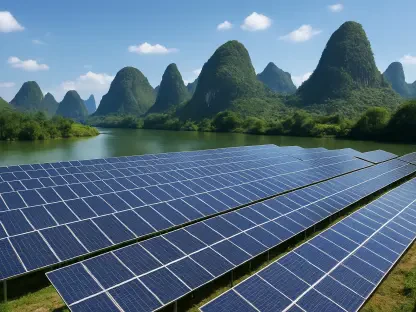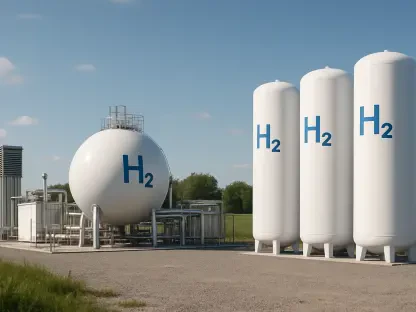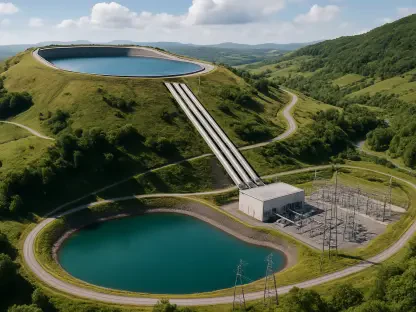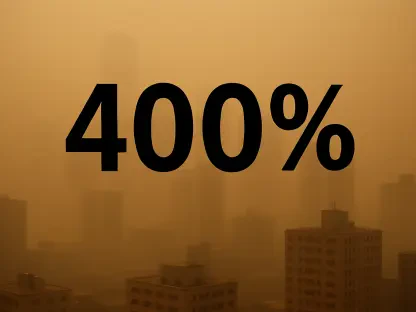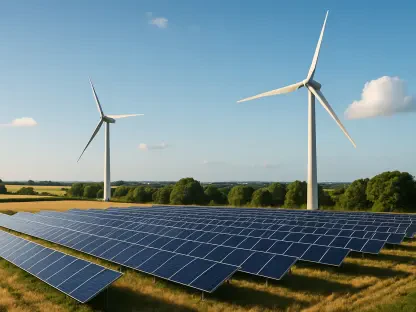In a sprawling 13-state region stretching from the Midwest to the East Coast, PJM Interconnection, the largest grid operator in the United States, faces a monumental challenge to integrate clean energy at an unprecedented pace. With federal tax credit deadlines looming and energy demand surging from data centers, the pressure is on to act swiftly. Over 100 state lawmakers have sounded the alarm, urging PJM to prevent missed economic opportunities and potential power shortfalls. This high-stakes scenario raises a critical question: can PJM overcome entrenched barriers to deliver a reliable, sustainable energy future?
The significance of this issue cannot be overstated. PJM oversees the grid for 65 million people, balancing reliability with the urgent need to transition to renewables. Missing tax credit deadlines—set for construction starts by July 4, 2026, and operations by December 31, 2030—could cost developers and ratepayers billions in incentives under recent federal legislation. Meanwhile, the grid strains under new loads, making the rapid deployment of solar, wind, and battery storage not just an environmental goal, but a necessity for stability. This story explores the obstacles, the voices driving change, and the path forward for a region at an energy crossroads.
Why the Rush for Clean Energy in PJM’s Grid?
The urgency gripping PJM’s territory stems from a perfect storm of policy and demand pressures. Federal tax credits, designed to spur renewable energy investment, come with tight timelines that many projects risk missing due to grid connection delays. If these incentives slip away, the financial blow could slow the clean energy transition across a region already grappling with retiring fossil fuel plants.
Beyond economics, the grid itself is under strain. Data centers, fueling the digital economy, are driving electricity demand to record levels, with PJM projecting significant shortfalls if new capacity isn’t added soon. Renewable projects, often faster to deploy than traditional power sources, represent a critical lifeline—if only they can navigate the bureaucratic and technical hurdles blocking their path.
This crisis has mobilized 107 state lawmakers, united under the National Caucus of Environmental Legislators, to demand immediate action. Their plea isn’t just about meeting green goals; it’s about ensuring energy reliability for millions while seizing economic benefits tied to federal support. The stakes have never been higher for PJM to adapt and deliver.
The Stakes of Delay: Tax Credits, Reliability, and Rising Demand
Missing the federal tax credit deadlines carries profound consequences for the energy landscape. Developers relying on these incentives face a narrow window to begin construction by mid-2026 and achieve full operation by the end of 2030. Failure to meet these targets could derail projects worth billions, ultimately raising costs for ratepayers who lose out on the savings these credits enable.
Simultaneously, PJM has issued stark warnings about potential power shortages since early 2023. With fossil fuel plants retiring and demand from data centers skyrocketing—some estimates suggest a doubling of energy needs in key areas over the next decade—the grid teeters on the edge of instability. Clean energy offers a viable solution, capable of filling capacity gaps if integrated swiftly, yet systemic delays threaten this opportunity.
The intersection of these challenges paints a dire picture. Economic incentives hang in the balance, while reliability concerns loom large for a population dependent on a steady power supply. For PJM, the task is clear: accelerate renewable integration or risk both financial losses and blackouts in a region ill-prepared for either.
Breaking Down the Barriers to Clean Energy Integration
At the heart of PJM’s struggle lies a tangled web of operational bottlenecks. Interconnection delays, where renewable projects wait years to connect to the grid, remain a primary obstacle, despite PJM reducing its queue from 200 GW to 46 GW in recent efforts. With 63 GW of projects either signed or pending, the backlog persists, stalling progress on a massive scale.
Network upgrade bottlenecks compound the issue, with transmission owners often cited for causing 25% of project delays. Lawmakers have proposed targeted reforms, including adopting “energy-only” interconnection rules to simplify the process and refiling capacity rights transfers at the Federal Energy Regulatory Commission (FERC) to shift resources from retiring fossil plants to new clean energy facilities. Greater transparency in tracking queue progress is also on their agenda to hold stakeholders accountable.
While PJM has made strides, the road ahead demands more aggressive action. Streamlining these technical and regulatory hurdles isn’t just about meeting deadlines; it’s about unlocking the potential of renewables to power homes and businesses across the region. The data shows progress, but the persistent gaps signal that much work remains.
Voices of Urgency: Lawmakers, PJM, and Expert Insights
Maryland Delegate Lorig Charkoudian stands at the forefront of the push for change, rallying lawmakers to press PJM into stronger federal advocacy. Amid concerns over political headwinds from the current administration, Charkoudian argues that PJM must champion an “all-of-the-above” energy strategy, ensuring renewables play a central role in meeting both affordability and reliability goals. Her leadership underscores a growing frustration among states seeking alignment with their clean energy ambitions.
PJM, through spokesman Jeffrey Shields, offers a measured response, acknowledging the need for diverse capacity types, including renewables. However, Shields points to external factors—permitting, supply chain disruptions, and financing issues—as significant contributors to delays affecting 46 GW of signed agreements and 17 GW of pending ones. This perspective highlights a shared responsibility beyond PJM’s direct control, complicating the path to swift integration.
Adding depth to the conversation, innovative efforts like PJM’s collaboration with Google/Tapestry on AI-driven grid planning signal a forward-thinking approach. Experts suggest such tools could optimize capacity forecasts and streamline project approvals, offering a glimpse of technological solutions amid systemic challenges. Together, these voices paint a complex picture of urgency, accountability, and potential.
Actionable Steps for PJM to Meet the Clean Energy Challenge
Addressing this crisis requires a concrete roadmap tailored to PJM’s unique constraints. Immediate implementation of FERC-mandated interconnection queue reforms from 2023 stands as a priority, ensuring faster processing of renewable projects. Enhanced reporting on delays, with clear metrics for accountability, could further expose bottlenecks and drive corrective action across the board.
Collaboration must also deepen, with PJM engaging state and federal agencies to align on policy and funding for grid upgrades. Lawmakers have suggested integrating states more directly into PJM’s governance to prevent tensions, such as Maryland’s discussions of potentially exiting the grid operator. Such inclusion could foster trust and ensure regional decisions reflect local energy priorities.
Finally, PJM should prioritize strategic filings at FERC, particularly on capacity rights transfers, to repurpose infrastructure from retiring plants for clean energy. These steps, grounded in existing frameworks, offer a practical way to balance tax credit timelines with grid needs. The region’s energy future hinges on turning these proposals into tangible results before time runs out.
Final Reflections and Future Directions
Looking back, the intense push by state lawmakers to compel PJM Interconnection to prioritize clean energy integration captured a pivotal moment in the region’s energy saga. Their detailed demands for reforms—from queue transparency to FERC filings—illuminated a path through operational and political challenges. PJM’s progress in reducing backlogs and exploring AI innovations showed promise, yet external delays and governance disputes with states underscored the complexity of the task.
Moving forward, actionable collaboration emerges as the cornerstone of success. PJM needs to forge stronger partnerships with states, leveraging shared data and resources to expedite grid connections. Federal support, too, remains critical to navigating policy barriers and securing funding for infrastructure. The region stands to benefit from pilot programs testing streamlined interconnection rules, offering scalable models for broader adoption.
Ultimately, the journey toward a sustainable grid demands sustained momentum. Stakeholders across the spectrum—lawmakers, grid operators, and communities—must commit to regular dialogue and adaptive strategies. Only through such unified effort can PJM transform the current crisis into a foundation for long-term energy resilience and economic gain.



